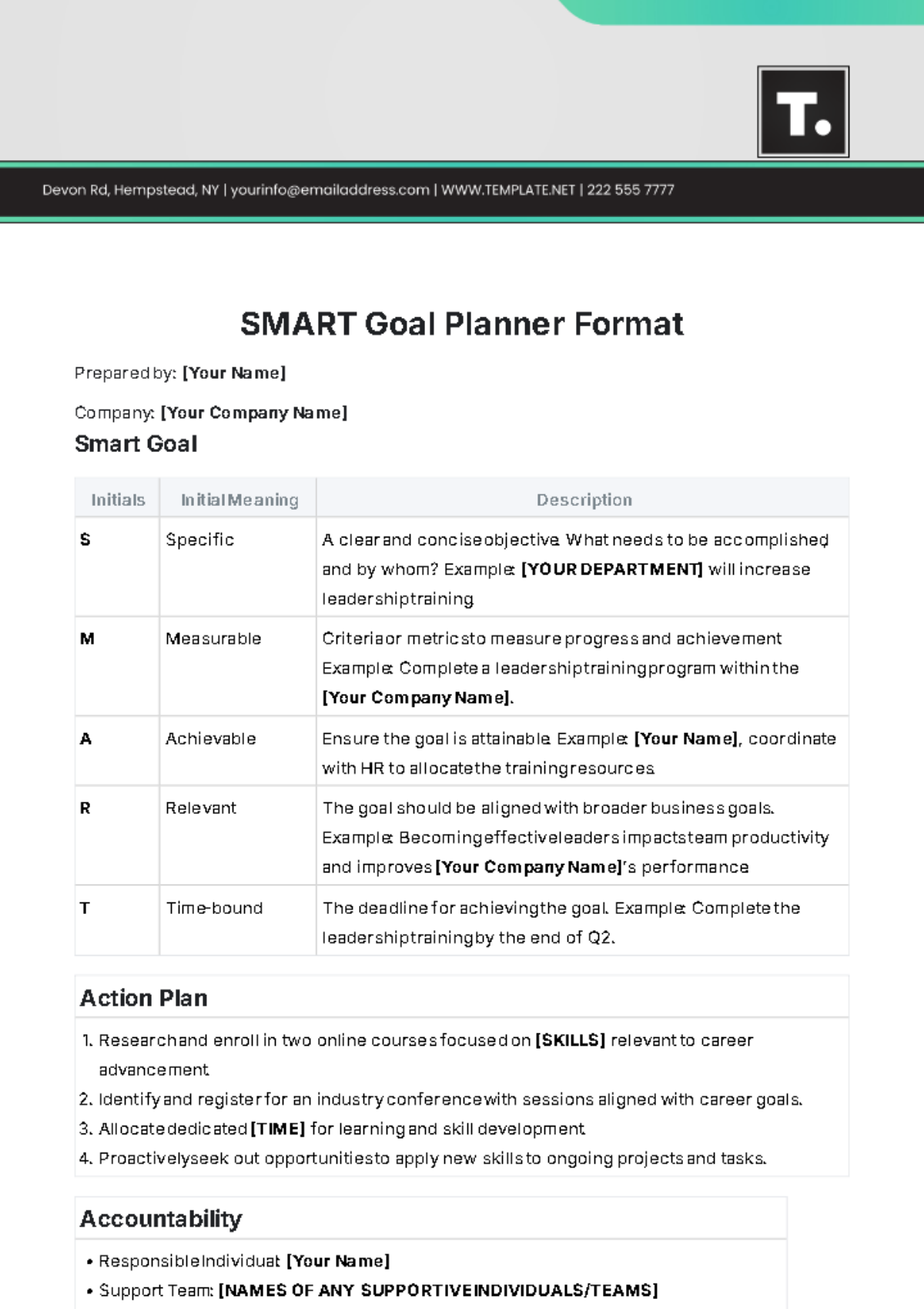SMART Goals Planner Format
Prepared by: [YOUR NAME]
I. Introduction
This SMART Goals Planner is designed to help systematically achieve your objectives by outlining clear, measurable, and time-bound steps. It provides a structured approach to track progress, ensure accountability, and overcome challenges efficiently.
II. SMART Goals
SMART | Details |
|---|---|
Specific | Define the goal clearly. Who is involved? What do I want to accomplish? When and where will this take place?
|
Measurable | Establish criteria for measuring progress. How much? How many? How will I know when it is accomplished?
|
Achievable | Ensure the goal is attainable. Is it realistic given current constraints? Do I have the necessary skills and resources?
|
Relevant | Align the goal with broader objectives. Does this goal matter? Will it make an impact?
|
Time-bound | Set a deadline. When will this be achieved? What can I do today, in six weeks, or in six months?
|
III. Action Plan
Step 1: Conduct a market analysis to identify opportunities for growth.
Timeline: Complete within the first month.
Step 2: Develop and launch a targeted marketing campaign based on the analysis.
Timeline: Launch by the end of the second month.
Step 3: Train the sales team on new sales techniques and strategies.
Timeline: Complete training within the third month.
Final Step: Monitor sales performance, adjust strategies as needed, and evaluate results.
Timeline: Ongoing through the sixth month, with a final review at the end.
IV. Accountability
Responsible Parties:
Sales Manager: Oversee the implementation of sales strategies.
Marketing Director: Manage the marketing campaign.
Check-ins & Reviews:
Frequency: Monthly progress meetings.
Milestones:
Milestone Dates: End of month 1, month 2, month 3, month 4, month 5, and final review at month 6.
V. Notes
Challenges and Solutions:
Challenge: Limited budget for marketing.
Solution: Focus on cost-effective digital marketing strategies.
Resources Required:
Market analysis tools
Additional marketing budget
Sales training materials
Additional Information:
The goal is aligned with the company's annual growth targets and strategic objectives.
VI. Progress Tracking
Metrics:
Monthly sales figures
Conversion rates from marketing campaigns
Status Updates:
Status: Monthly updates to be recorded and reviewed.
Completion Date:
Final Date: [Date 6 months from today]
VII. Conclusion
The goal to increase monthly sales by 20% is integral to our growth strategy and will be monitored through regular progress updates and milestone reviews. By adhering to the outlined action plan and overcoming potential challenges, we aim to achieve and exceed this objective.






























